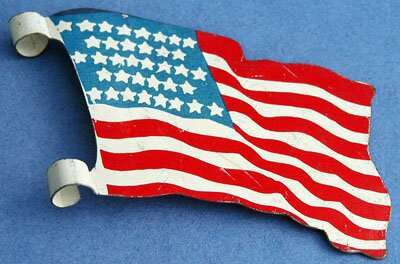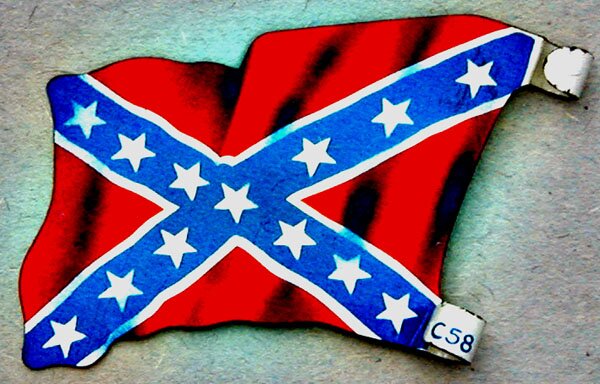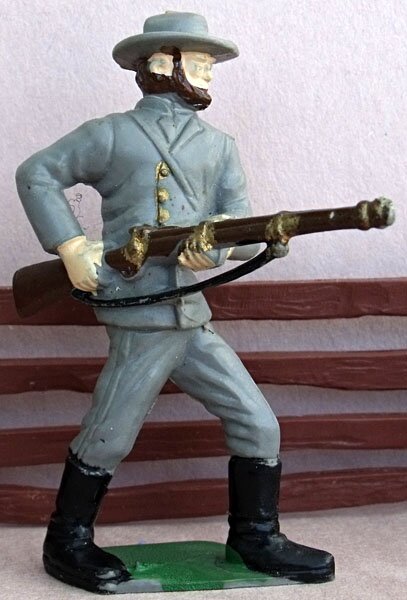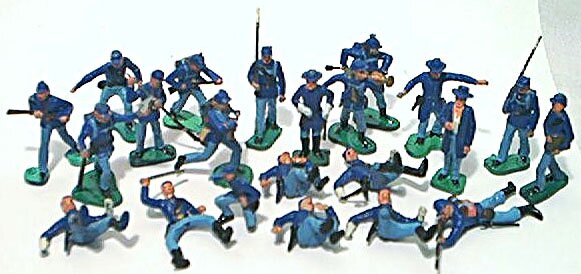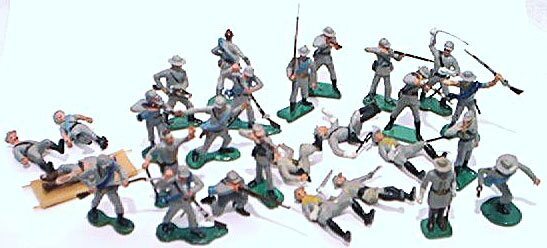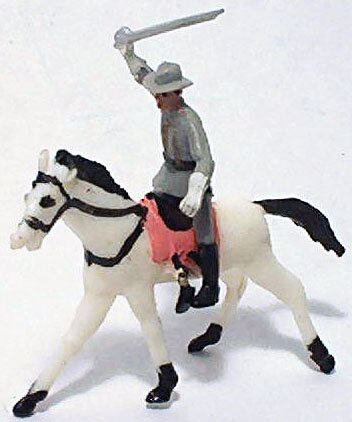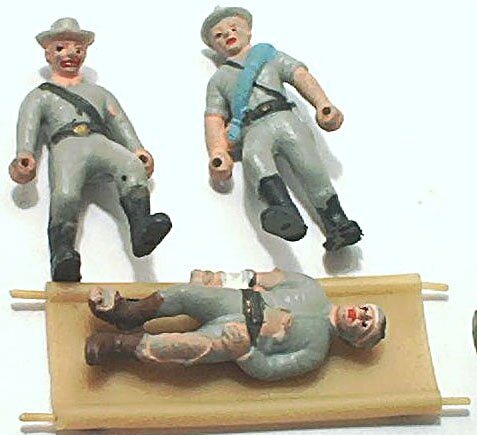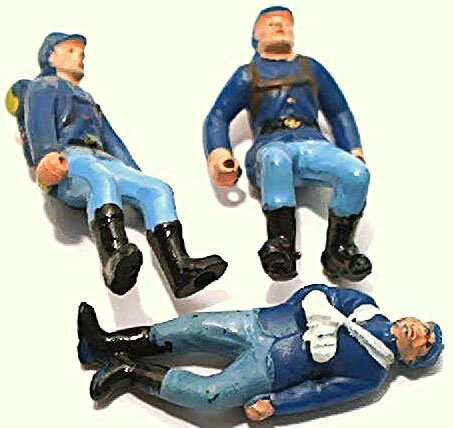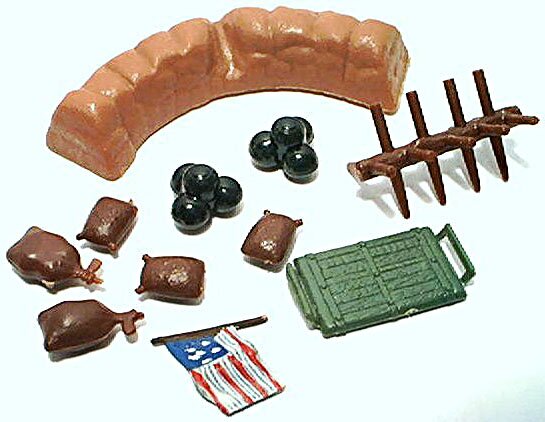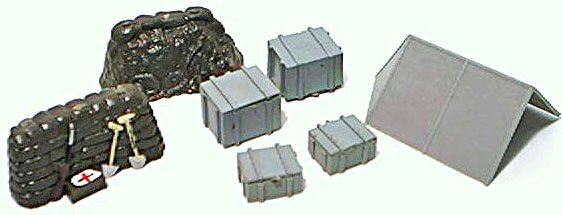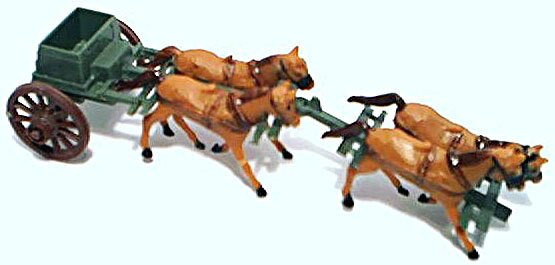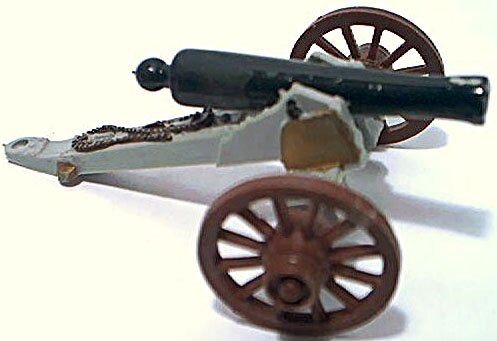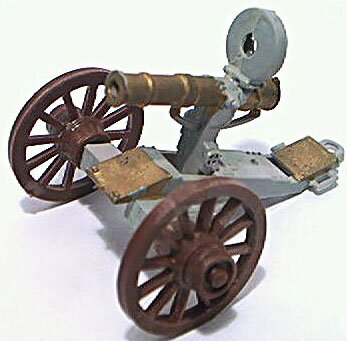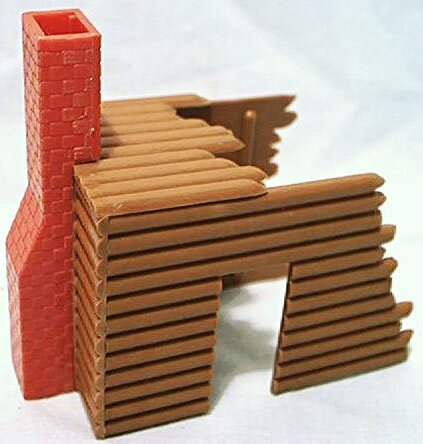|
An Inventory of Marx Playset Figures and Accessories
Manufactured from 1951 to 1979
Appendix C-1 - Playset Figures
|
Contents of this web site may not be reproduced or duplicated for use on the Internet or for commercial purposes without permission by Eric Johns.
Character Figures
PL-902 (or PL-902A with Davis)
Marx included at least three character figures in all its Civil War playsets: President Lincoln, General Grant, and General Lee. Jefferson Davis, however, was not added until the Giant Blue and Gray set was released in 1961. The figures are a slightly smaller scale than the first issue soldiers (shown below) and came only in the soft plastic cream in which most Marx character figures were made. I am not sure of the actual heights of these presidents and generals, but the photos below are shown in correct proportion to one another as the actual Marx figures.
Generals Grant and Lee have their names on the front of their bases, as seen in the photos. All four have their names impressed into the bottom of their bases.
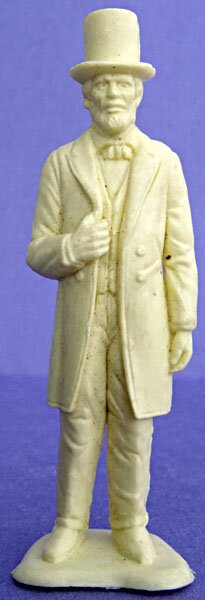 |
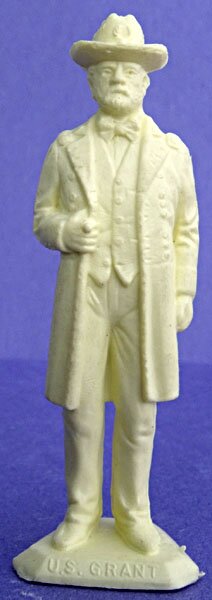 |
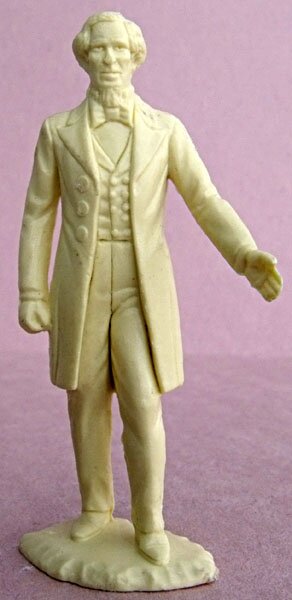 |
 |
| President Abraham Lincoln | General Ulysses S. Grant | President Jefferson Davis | General Robert E. Lee |
Go to top of page
Mounted Figures
PL-849
These four mounted or riding figures were included in all Civil War playsets except for one or two small sets. Whether blue or gray, the figures are identical. Figure 1 and 2 are mounted on horses, which are shown in the next section on this page. Figures 3 and 4 ride on a limber, a small horse-drawn wagon that carries a caisson of cannon rounds and pulls a cannon. The limber -- incorrectly called a caisson by some collectors -- is shown on Page 3.
Sets generally included two each of the mounted poses, one for each side However, early sets only included one limber driver and rider, almost always in blue. Pose 3 is intended to sit astride one of the horses pulling the limber; the calling figure of Pose 4 sits on the limber seat. The head of Pose 4 is rather odd and looks suspiciously like a pumpkin!
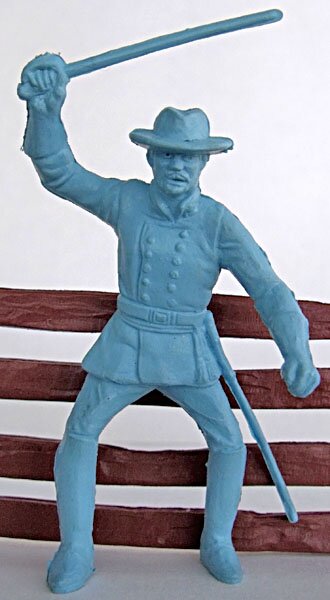 |
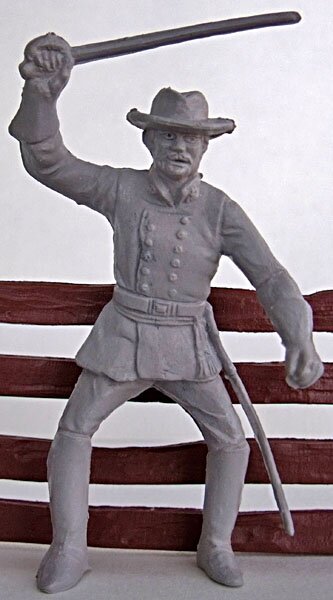 |
| 1. Mounted with slouch hat | |
 |
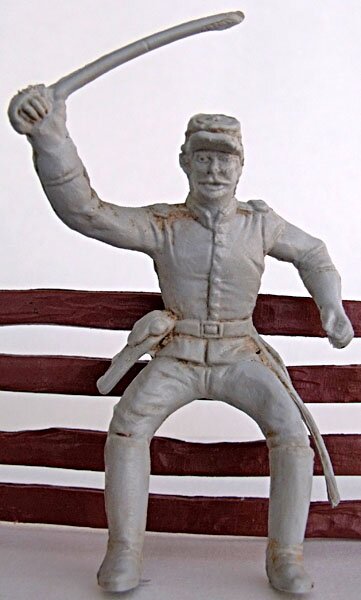 |
| 2. Mounted with Kepi hat | |
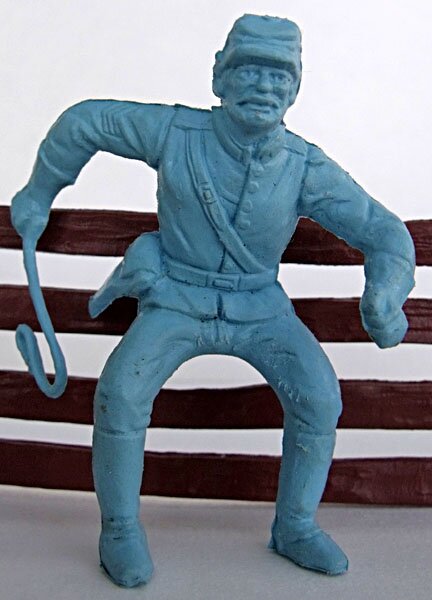 |
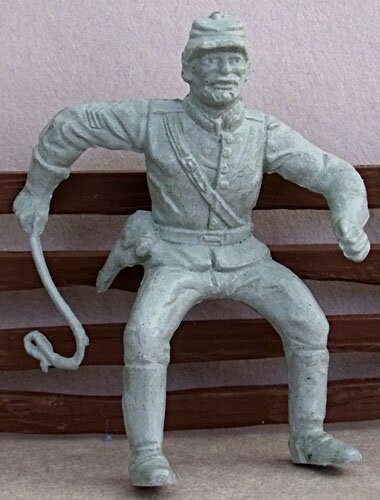 |
| 3. Limber and caisson driver | |
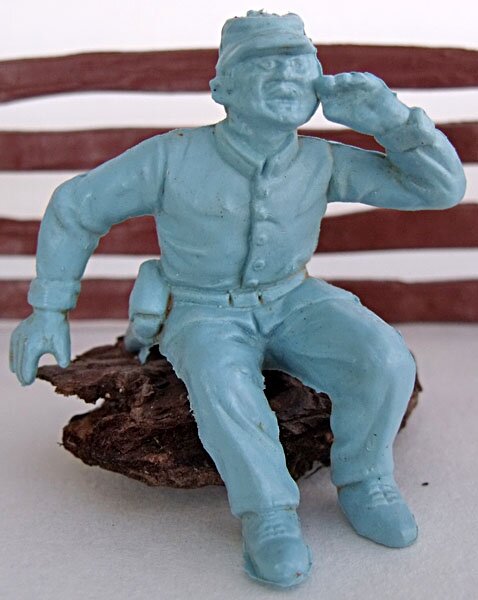 |
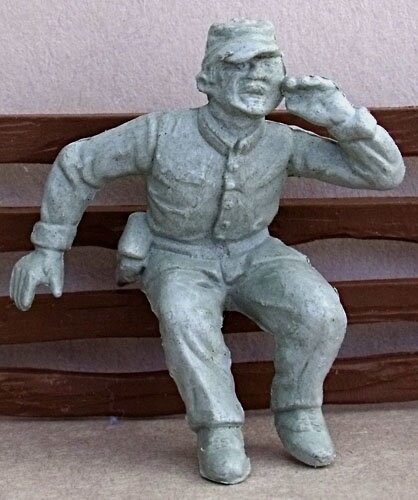 |
| 4. Limber and caisson rider | |
Go to top of page
Horses
For the most part, Civil War sets included three types of horses. Those most often seen are the cavalry horse and the harness horse. For the Union and Confederate mounted figures, Marx used its standard U. S. Cavalry horses from Wild West sets. Similarly, the horses with molded-on harness that pull the cannon limber also pull covered wagons and stagecoaches in the Wild West sets.
The lying-down horse was in Fort Apache and Custer's Last Stand before its Civil War appearance. Many collectors refer to it as a dead horse, but Marx staff have clearly stated that it was designed as a horse pulled down to provide cover for a soldier, supposedly a common practice of cavalrymen.
A few later Civil War sets also included the falling horse and rider, which are shown later on this page.
 |
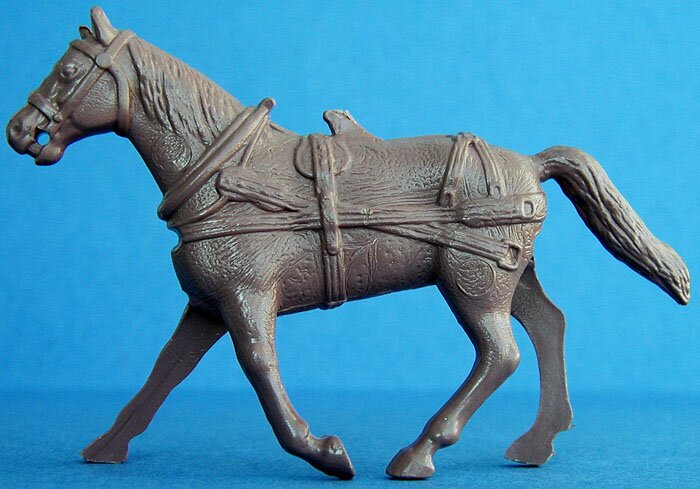 |
| Cavalry horse (PL-779) |
Harness horse (PL-532) |
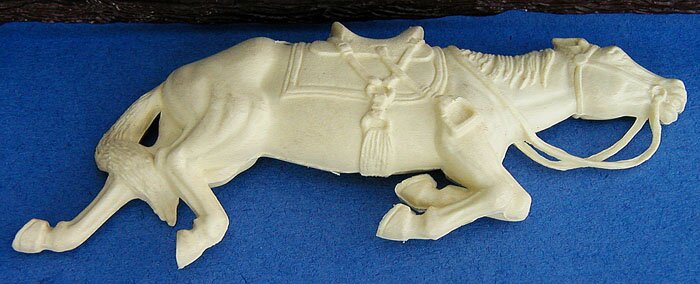 |
|
| Lying down horse (PL-850) |
Go to top of page
First Issue Union Soldiers
PL-847
The "first issue" figures -- as named by collectors -- appeared in the early Marx Civil War playsets sold from 1958 to about 1960. They were also in later sets, but additional poses from the centennial group shown below were added in 1961. There are 10 "first issue" poses for each side, but with each side getting its own unique poses. Some poses are similar -- such as the marching pose -- but have obvious differences.
The Union mold included 16 figures with six duplicates: 3 extra marching poses, 1 lying shooting rifle, 1 advancing with bayonetted rifle, and 1 running with rifle.
According to veteran collector Josh Petrie, the molds that Marx used to produce first issue Civil War figures began to break down during 1961. This included both this Union group and the Confederate group that follows. As a result, figures from 1961 and later "...were a bit thicker in their more slender extremities (particularly noticeable in the length and thickness of the bayonets)."
 |
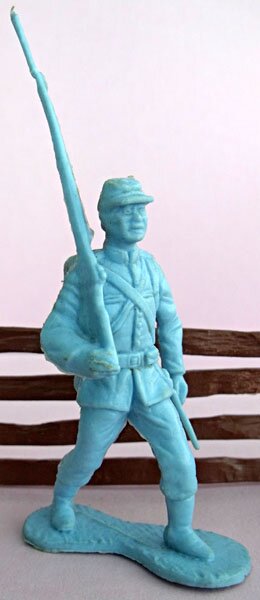 |
| 1. Lying, shooting rifle | 2. Marching |
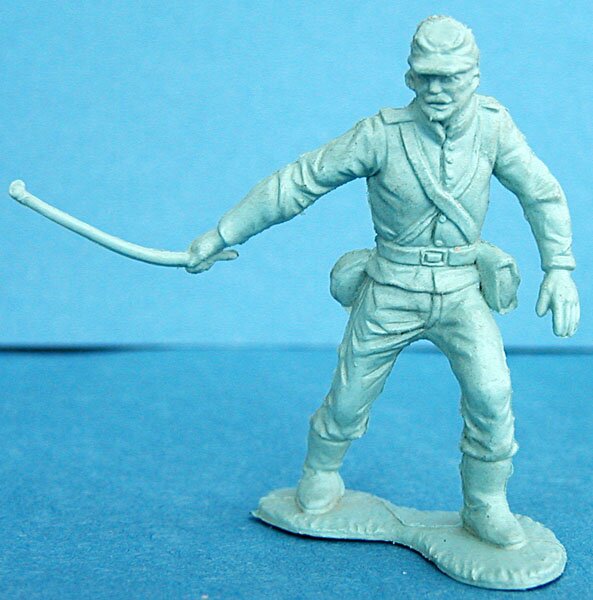 |
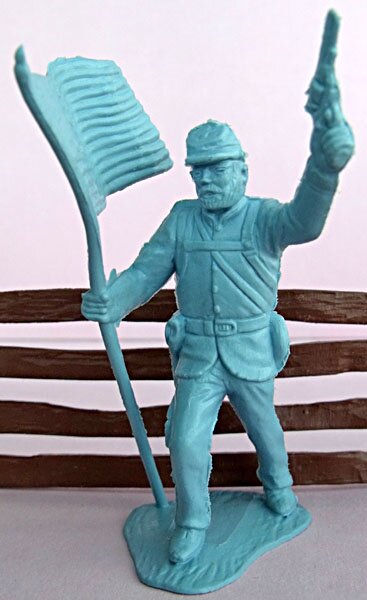 |
| 3. Walking, cannon ignitor in right hand | 4. Flag bearer |
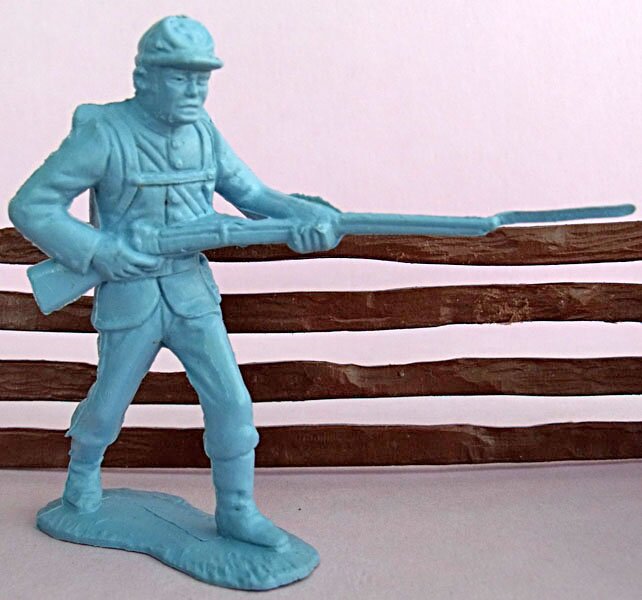 |
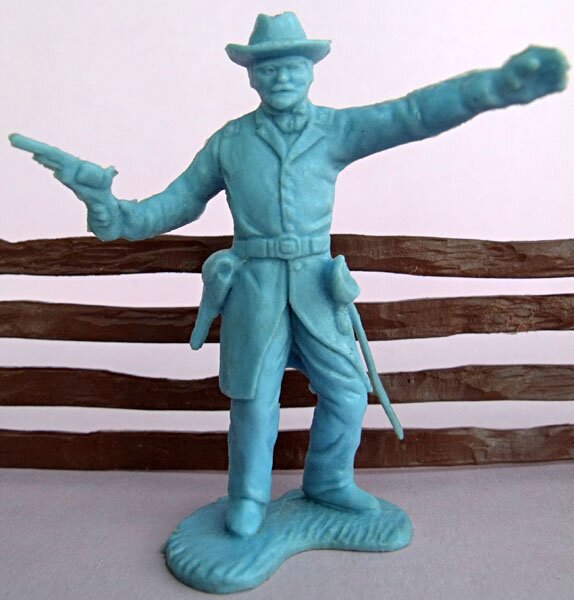 |
| 5. Advancing with bayonetted rifle | 6. Officer with pistol, left arm out |
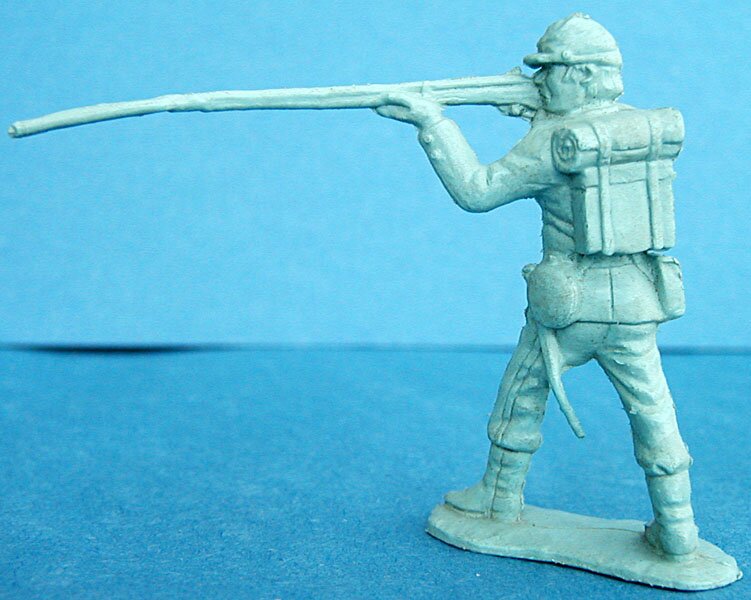 |
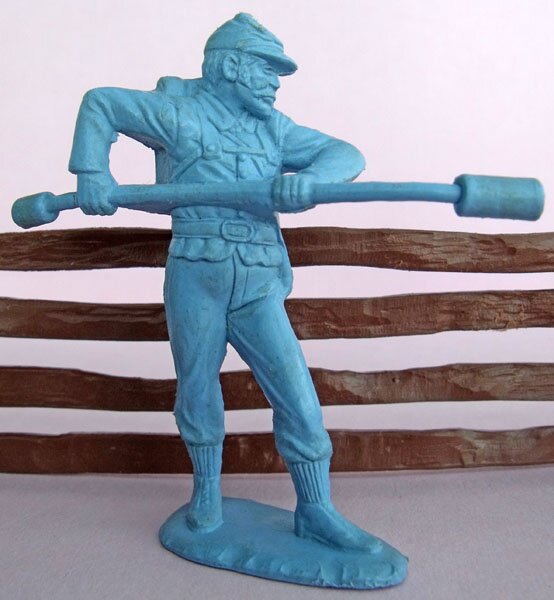 |
| 7. Standing, shooting rifle | 8. Standing, ramrod at waist |
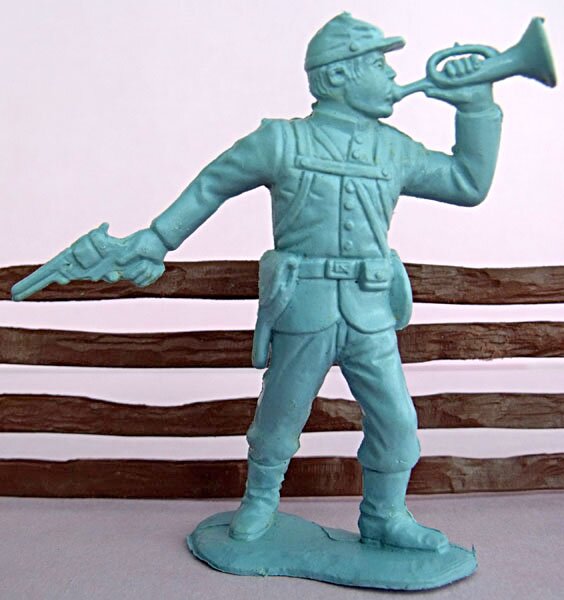 |
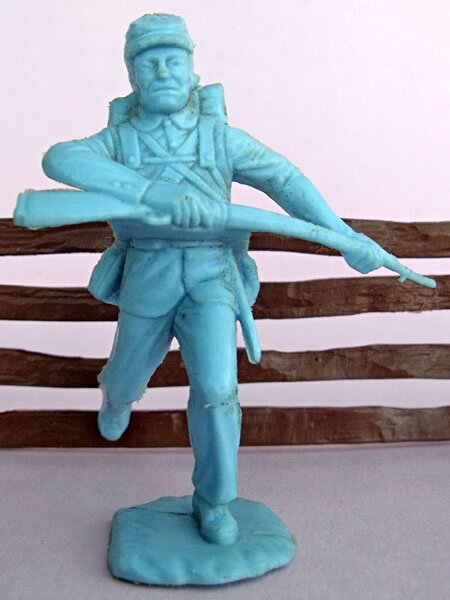 |
| 9. Bugler | 10. Running |
Go to top of page
First Issue Confederate Soldiers
PL-848
Like the Union group, there are 10 "first issue" Confederate poses, and additional centennial group poses shown below were added in 1961. The Confederate mold included 16 figures with six duplicates: 3 extra maching poses, 1 kneeling shooting rifle, 1 calling with rifle overhead, and 1 running with rifle.
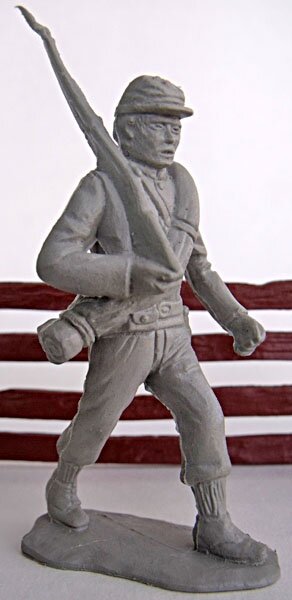 |
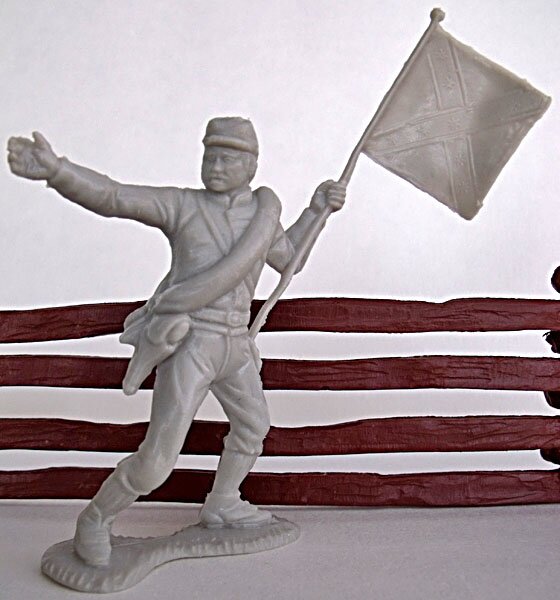 |
| 1. Marching | 2. Flag bearer |
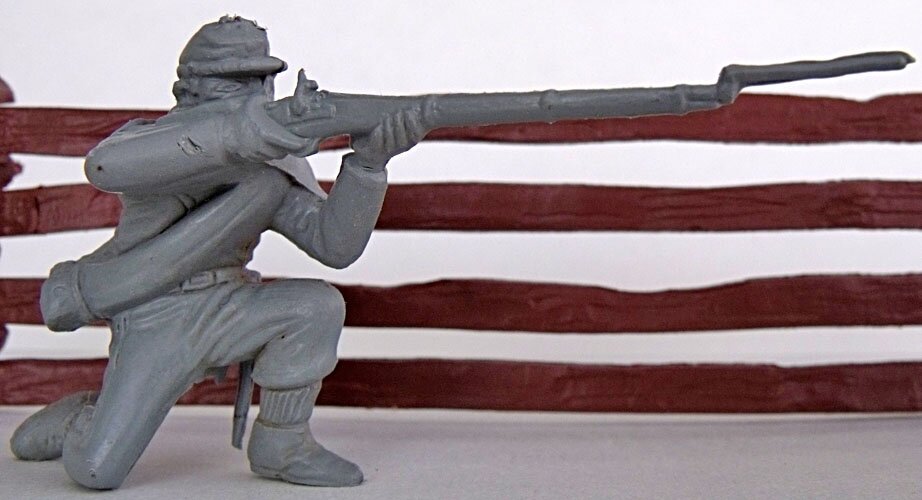 |
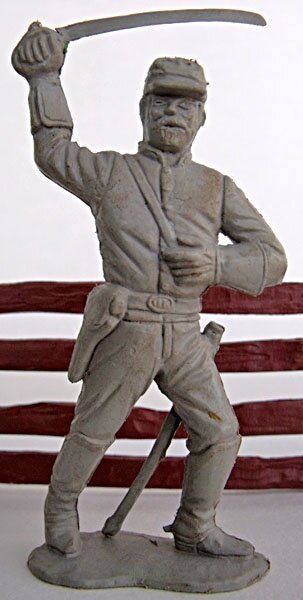 |
| 3. Kneeling, shooting rifle | 4. Officer, sword overhead |
 |
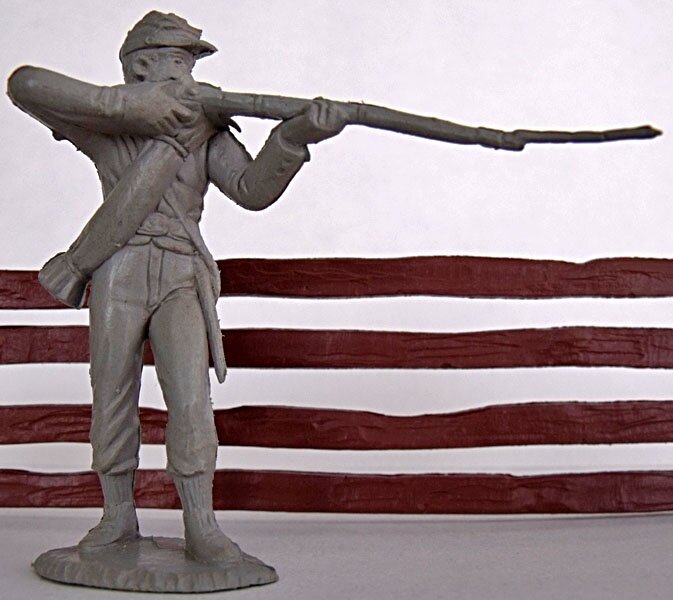 |
| 5. Loading rifle | 6. Standing, shooting rifle |
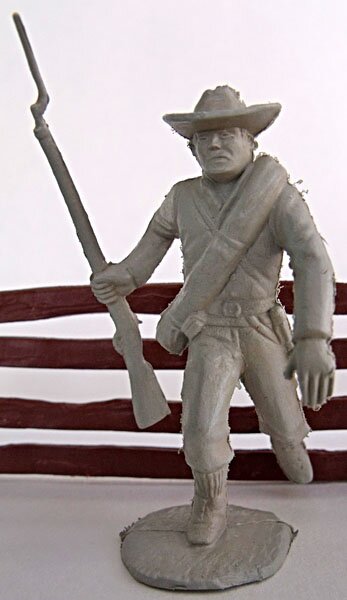 |
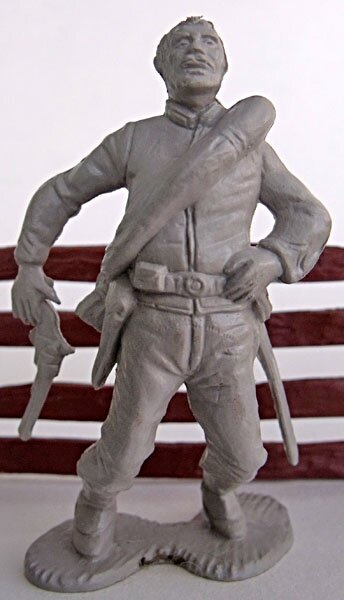 |
| 7. Running | 8. Shot, dropping pistol |
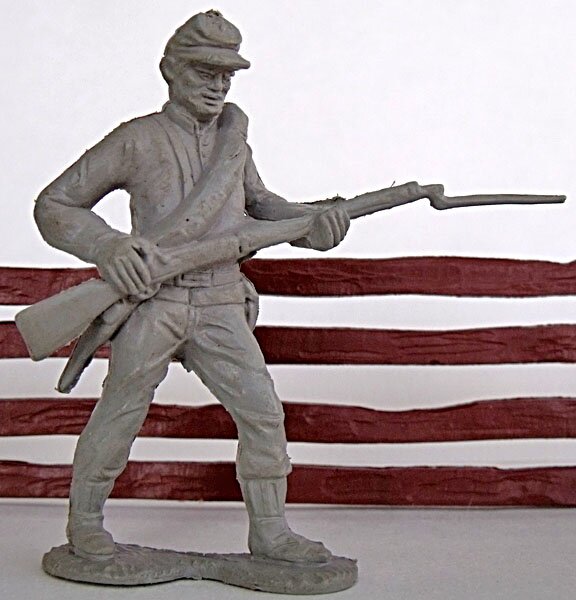 |
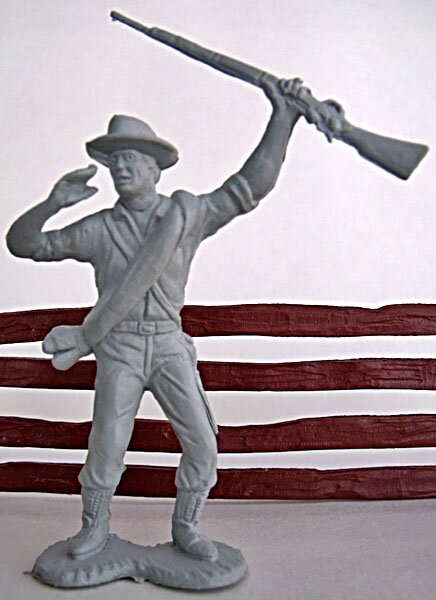 |
| 9. Advancing with bayonetted rifle | 10. Calling, rifle overhead |
Go to top of page
Falling Horse and Rider
PL-1153
Based on my review of several articles in Playset Magazine and other reference sources, this pair of figures first appeared in Marx playsets in 1963. Some collectors have told me that they have also found them in 1961 playsets. However, based on what I have read, they were not released until 1963, appearing that year in Giant Fort Apache (#6063), Custer's Last Stand (#4670), and Battle of the Blue and Gray (#4744) playsets. The 54mm soft plastic horse and rider were manufactured in gray for the Civil War. I may be wrong, but I have not seen it listed in the contents of any other Civil War playset.
The Falling Horse and Rider are considered by many collectors to be the most beautiful and artisitic of all Marx playset figures. I will not disagree with them, but being of soft heart, I feel sad to see a horse going down. Even some of us vets turn mushy in our old age! Overall, these figures did not appear often and, therefore, are rather expensive today. These figures were molded in cream for playsets of other themes and are more often found in that color.
Re-issues are plentiful.
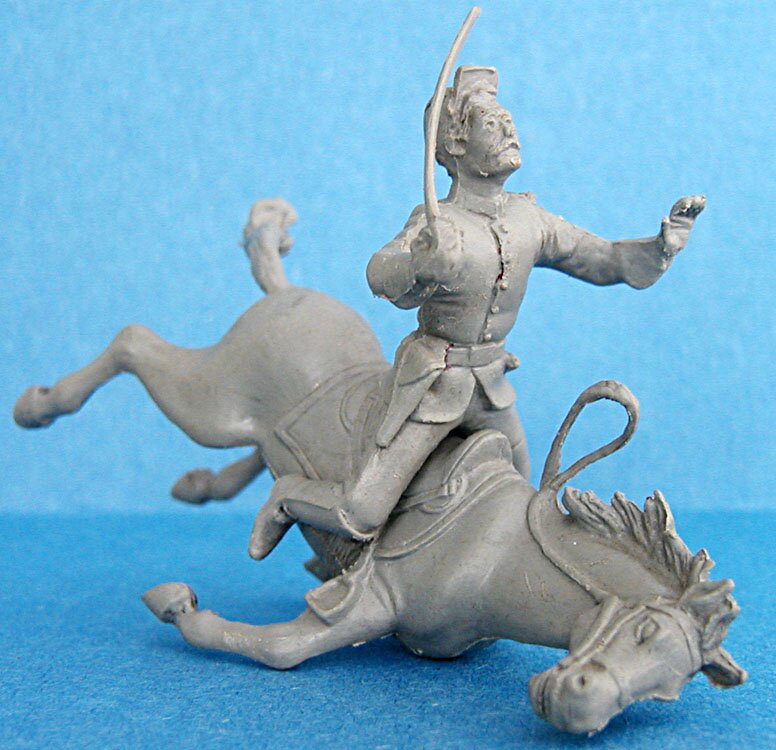 |
| Falling horse and rider |
Go to top of page
Centennial Soldiers
PL-1093
The 1961 Giant and Centennial Blue & Gray playsets introduced a new group of Civil War figures. Designated as "the medical group" by Marx, collectors have come to call it the Centennial group, because these playsets were issued by Marx on the 100th anniversary of the onset of the Civil War.
Initial playsets included this group only in gray; Union soldiers were reinforced with a double set of the first issue Union group. Later, sets came with both blue and gray Centennial figures. The group includes 12 poses, plus a stretcher. The mold included two each of the stretcher bearers, bayonetting, and crawling, for a total of 16 pieces in each group.
The wounded are especially nice figures, and it is too bad that Marx did not make more such figures. My personal favorite is the officer in the slouch hat, kneeling with a pair of binoculars in hand. As far as the battle itself, the officer leading the charge with sword at the ready is an impressive figure, but notably there seem to be few poses among Marx' Civil War figures that appear ready to follow him. On the other hand, double, triple, and quadruple up those few poses, add in some of the two mounted cavalry officers, and you might have a pretty fair Army.
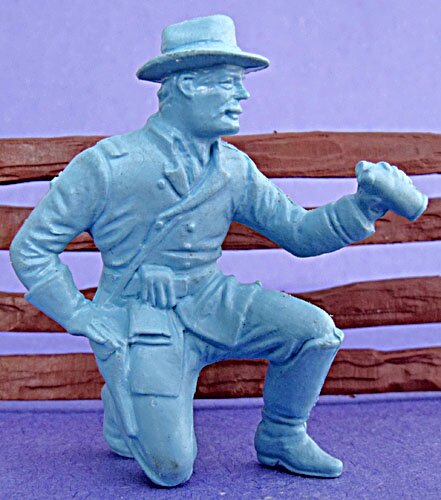 |
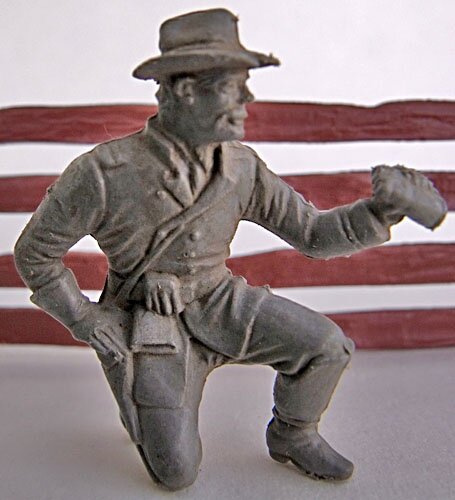 |
| 1. Kneeling with binoculars | |
 |
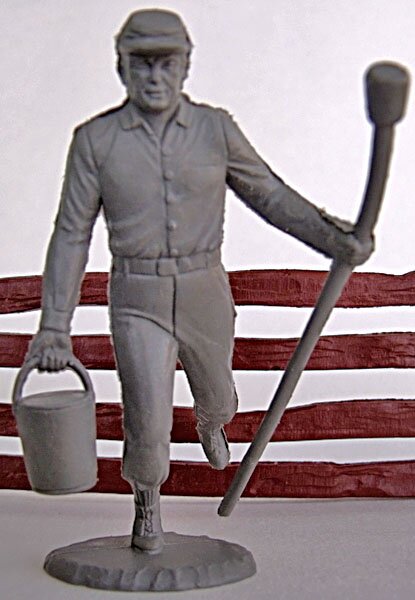 |
| 2. Running with bucket and ramrod | |
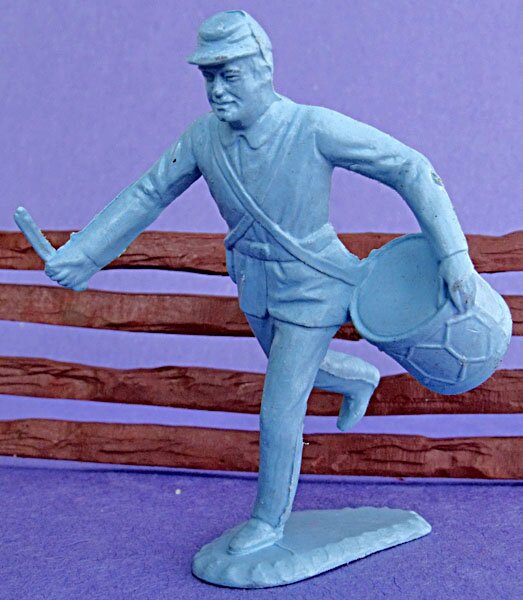 |
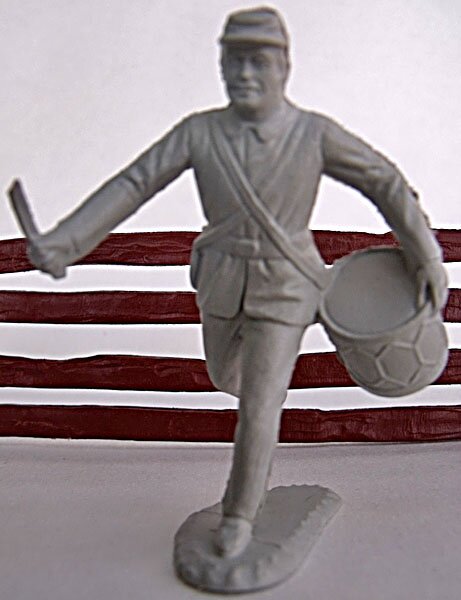 |
| 3. Drummer | |
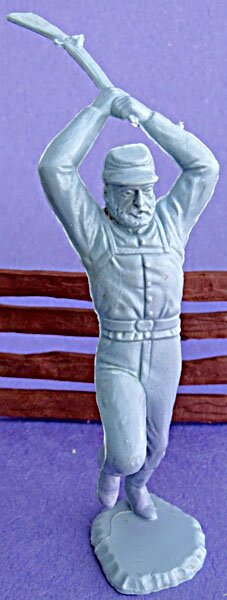 |
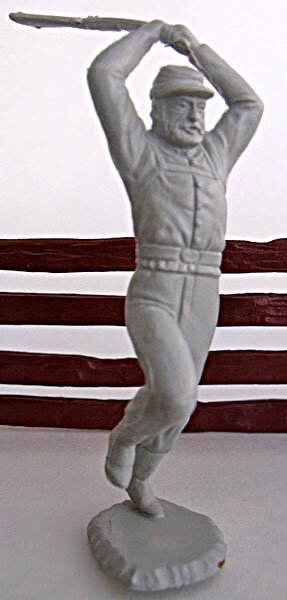 |
| 4. Clubbing with rifle | |
 |
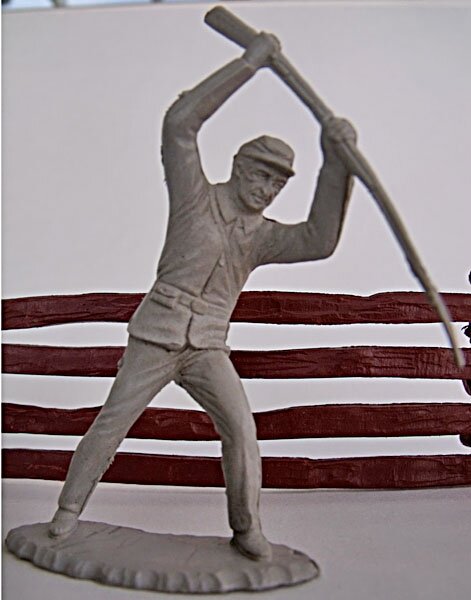 |
| 5. Bayonetting downward | |
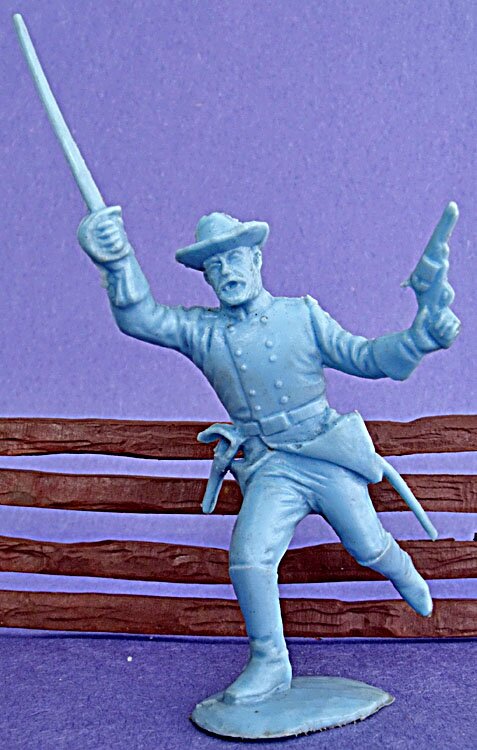 |
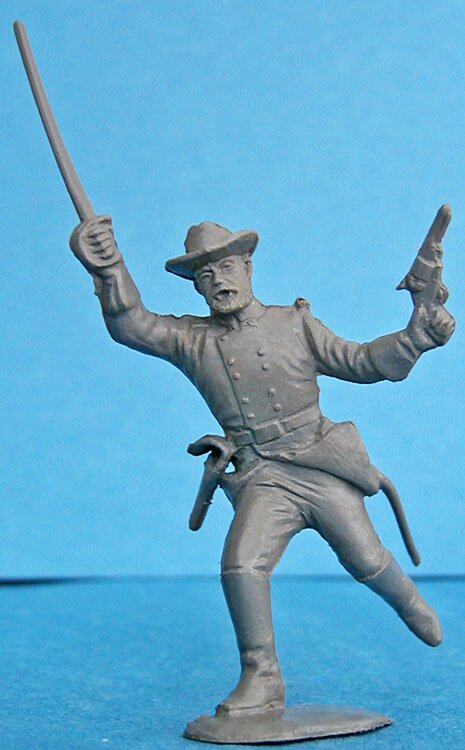 |
| 6. Officer with sword and pistol | |
 |
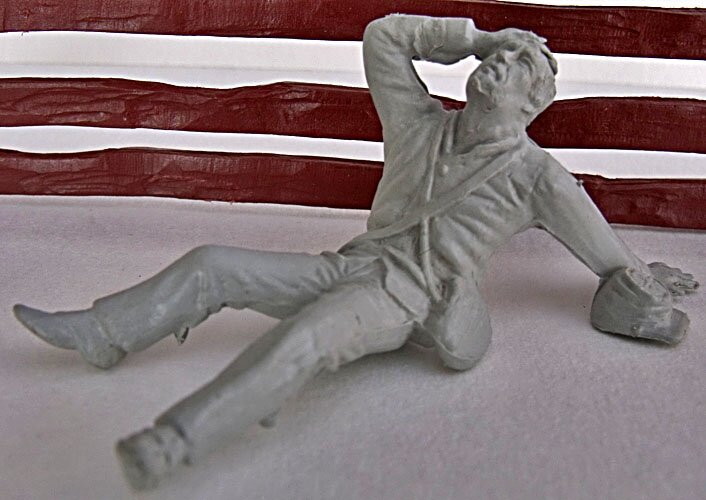 |
| 7. Lying wounded, hand to head | |
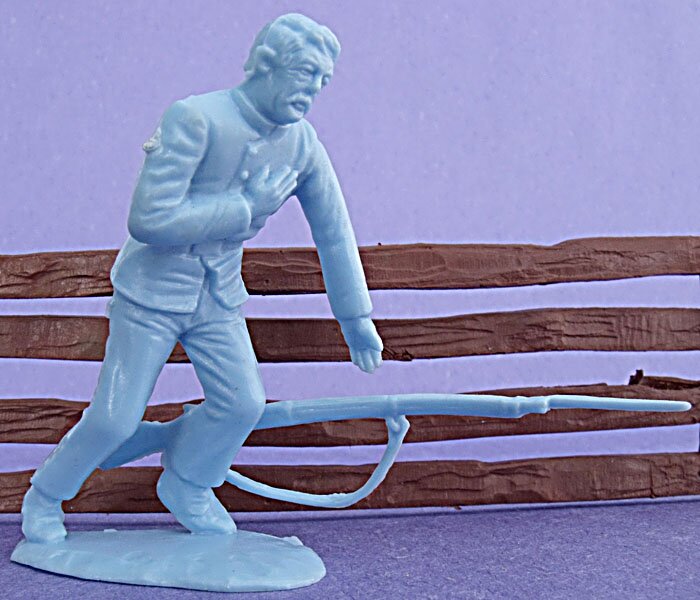 |
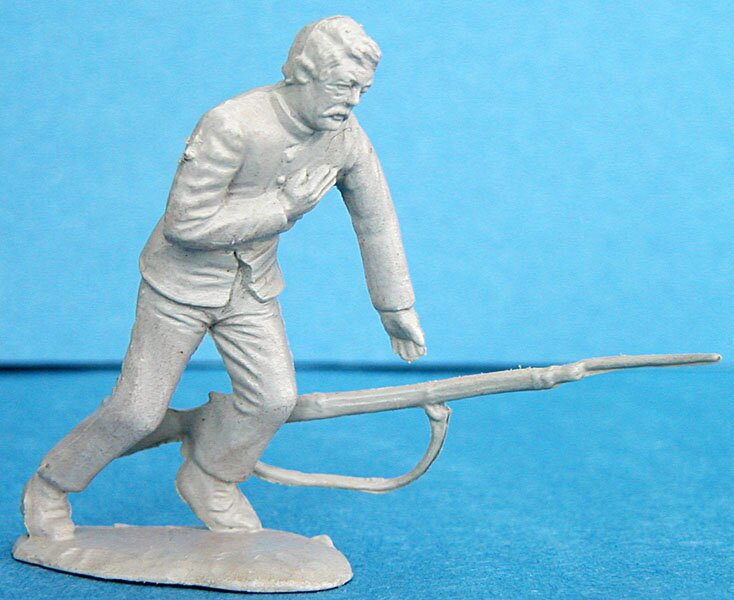 |
| 8. Shot, dropping rifle |
|
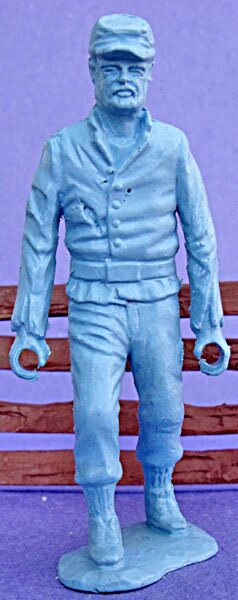 |
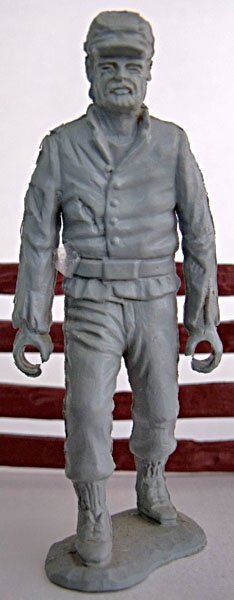 |
| 9. Stretcher bearer | |
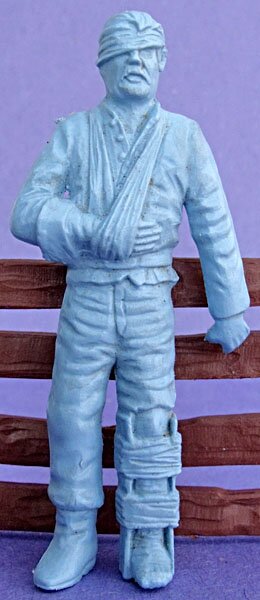 |
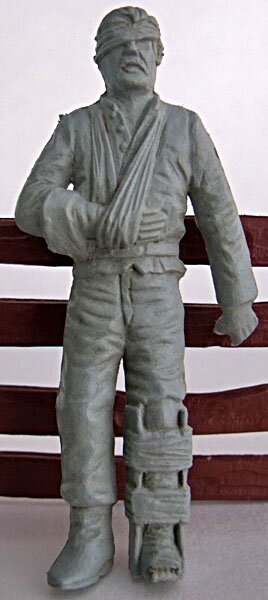 |
| 10. Lying wounded on stretcher | |
 |
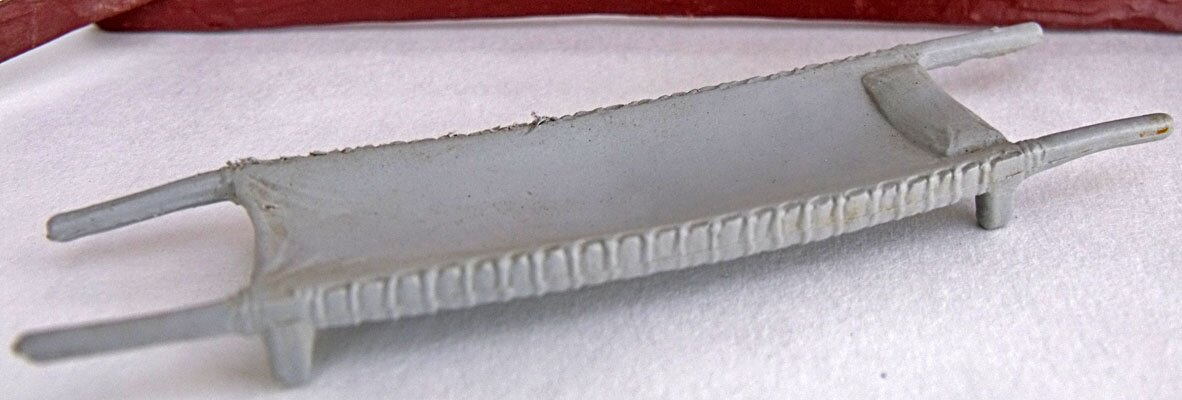 |
| Stretcher | |
 |
| Stretcher team |
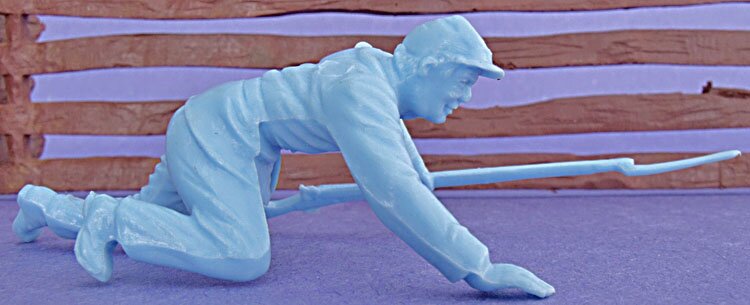 |
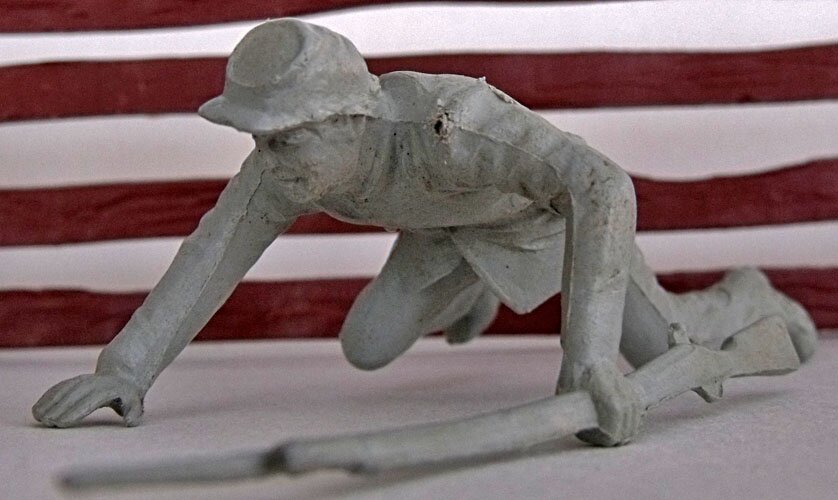 |
| 11. Crawling with rifle | |
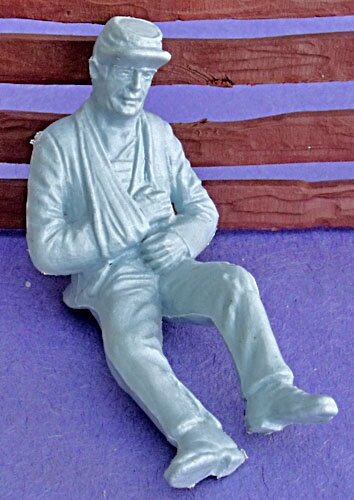 |
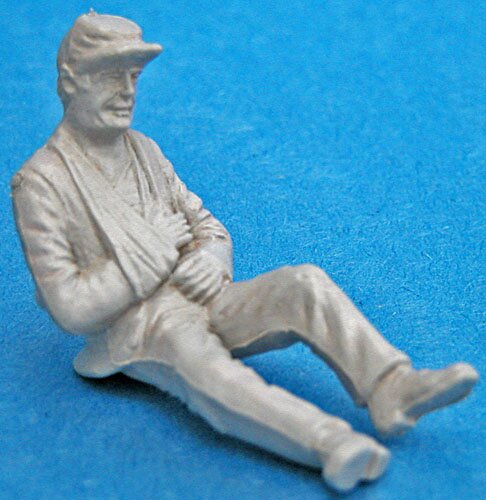 |
| 12. Sitting, arm in sling | |
Go to top of page
